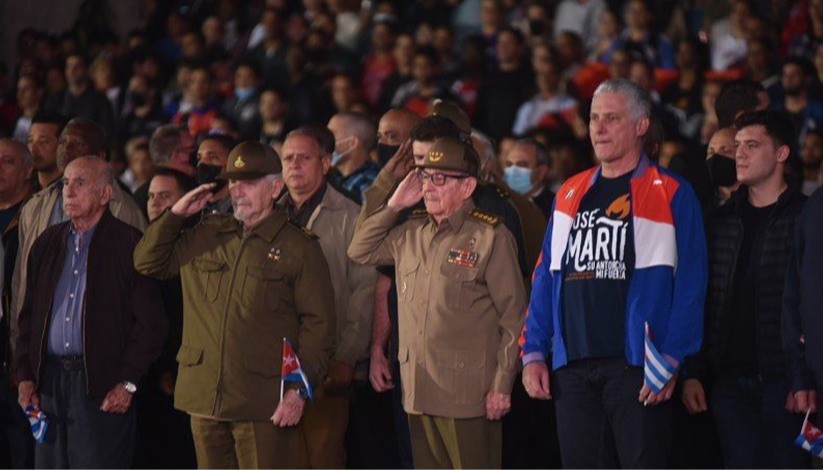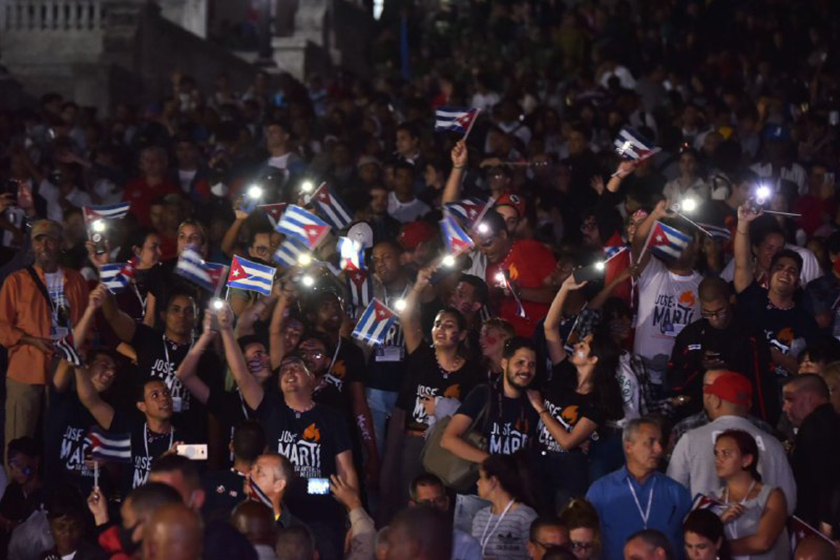
Photos: Omara García Mederos. ACN.
Havana, Jan 27 (RHC) The leader of the Cuban Revolution, Raúl Castro, and the President of the Republic, Miguel Díaz-Canel participated this Friday in the traditional march of the Torches in homage to National Hero José Martí, on the 170th anniversary of his birth.
The leaders accompanied the students and the people of Havana on the walk from the University of Havana to the Martí Forge under the slogan "Your torch, my strength".
Before the pilgrimage, the president of the University Student Federation (FEU), Emilio Morejon, said that young people carry "the sap of the apostle (Marti) and other men and women of the Revolution, who have defended this work of dignity and creation, which we come to defend here today and which we will always defend".
Now it is our turn, he pointed out, to carry the fire of our torches with the same boldness of those who taught us to be Martians, anti-imperialists, and that defending the Revolution comes first.
He emphasized the commitment of the Cuban youth to the historical leader, Fidel Castro, Martí, and the active role that the youth will have in the next national elections.
Also participating in the march were the head of the National Assembly of People's Power, Esteban Lazo, Prime Minister Manuel Marrero, Foreign Minister Bruno Rodríguez, and Commanders Ramiro Valdés and José Ramón Machado.
The parade is also a tribute to Fidel Castro, to the "pioneer generation" of the Revolution, and a "call to have Martí as a guide for the rebellious action of the youth".
The tribute to the National Hero also takes place on social networks with a national tweet, with the tags #MartíVive, #SuAntorchaMiFuerza, and #MartianosHoy.

Photos: Omara García Mederos. ACN.
The first March of the Torches was organized for the midnight of January 27, 1953, to await the advent of the centenary of the birth of José Martí.
According to historical research, the walk also became an act of protest against the crimes of dictator Fulgencio Batista (in power after the 1952 coup d'état) and the persecution of young people who sought to change the political course of the island. (Source: Prensa Latina).

